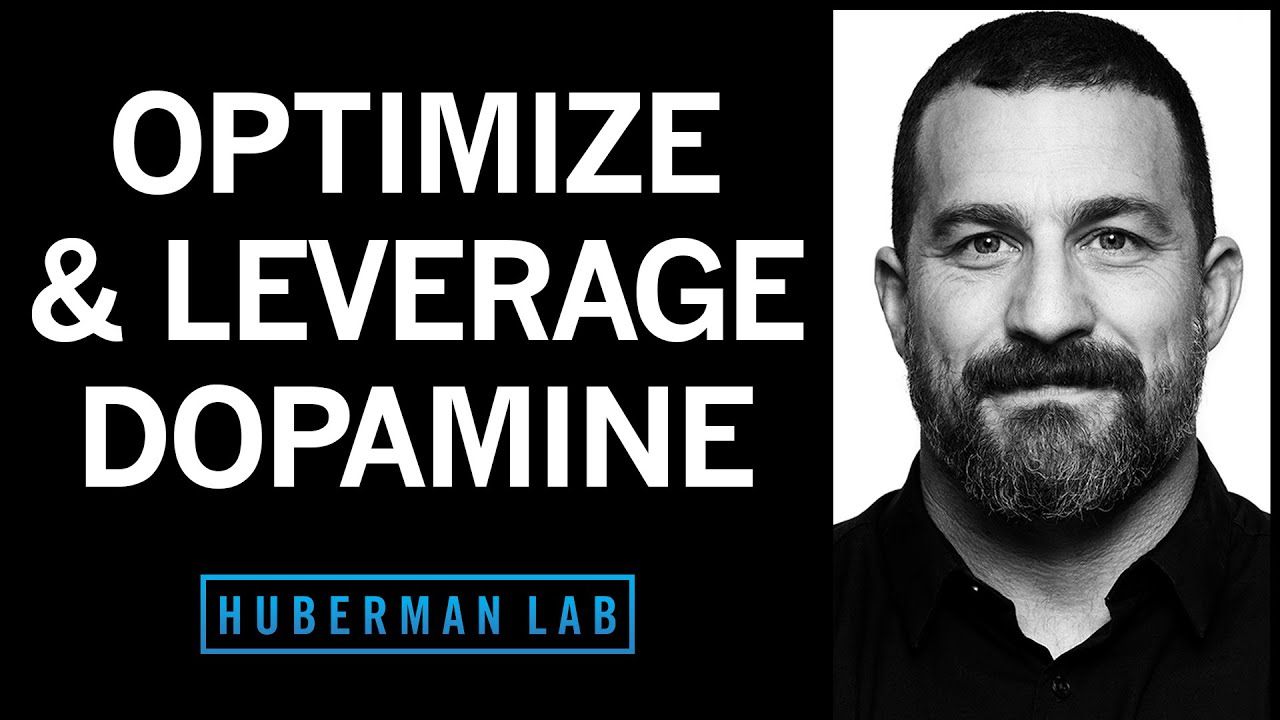Leverage Dopamine to Overcome Procrastination & Optimize Effort | Huberman Lab Podcast

This episode from Andrew Huberman’s Lab Podcast explores the intricate dynamics of dopamine and how understanding its function can help overcome procrastination and optimize motivation.
The episode covers multiple tools and strategies, including behavioral, cognitive, nutrition-based, and supplementation-based approaches to enhance dopamine levels and maintain motivation.
It also discusses the neuroscience behind motivation, procrastination, and confidence.
Dopamine is responsible for all of those things [pleasure, motivation, drive], but you are also going to learn that dopamine is critical for overcoming procrastination, for ensuring ongoing motivation, and indeed for ensuring confidence. – Andrew Huberman
The Dynamics of Dopamine
Dopamine dynamics refer to the changes in our baseline and peak levels of dopamine.
These dynamics, which involve peaks, troughs, and baselines, are responsible for our motivation and the desire to pursue what we want.
Importantly, dopamine is released in anticipation of desired rewards, not just when the rewards are obtained.
Empowerment through Understanding Dopamine Dynamics
Understanding and leveraging dopamine dynamics empowers individuals to optimize motivation, overcome procrastination, and reset their motivation on an ongoing basis for goal achievement.
This understanding provides a powerful tool for self-improvement and personal growth.
Strategies to Leverage Dopamine for Motivation
Various strategies can be implemented to leverage dopamine circuitry and enhance motivation.
These include foundational practices like sleep, deep rest, nutrition, and sunlight, and activities that bring joy, learning new skills, and engaging in social interactions.
Regular upkeep of these practices is necessary to maintain a healthy dopamine system for consistently pursuing goals.
Dopamine and Long-Term Goals
The duration between desire and the rewarding effects of dopamine shapes our motivation, making it difficult to pursue long-term goals with short gaps between stimulus and dopamine reinforcement.
To optimize motivation and drive, it’s important to understand and leverage the height, rate, and duration of dopamine peaks and troughs.
The Role of Dopamine in Motivation
Dopamine, a neurotransmitter, plays a central role in driving our cravings, motivation, and sense of well-being.
It is primarily involved in five circuits within the brain, each serving different functions such as movement initiation, reward modulation, decision-making, hormone regulation, and vision maintenance.
Understanding these circuits can help optimize motivation and mental health.
Overcoming Procrastination with Dopamine
Understanding and leveraging dopamine dynamics can help overcome procrastination.
The drop below baseline after a dopamine peak triggers the desire to pursue, and finding what we want can boost motivation levels.
Practical everyday examples and tools are provided to optimize dopamine levels for improved motivation and performance.
The Role of Environmental Cues in Dopamine Release
Stimuli in the environment act as cues that signal the likelihood of obtaining the desired reward, triggering dopamine release.
By developing awareness of the dopamine system, setting a positive mindset, and paying attention to these cues, individuals can enhance their motivation and goal achievement.
By understanding how those things [dopamine dynamics] relate to one another, I assure you that by the end of today’s episode you will be in a far better position to understand why you become motivated, why you procrastinate, how to ensure motivation on an ongoing basis, and even how to leverage effort and the desire to become motivated as a way to do just that, to become more motivated. – Andrew Huberman
Using Dopamine Dynamics to Overcome Procrastination
Dopamine dynamics can be leveraged to overcome procrastination and optimize motivation.
Engaging in activities that deepen the dopamine trough, such as cold exposure or meditation, can expedite the return to motivation.
Furthermore, attaching reward to the process of effort itself makes the journey towards goals enjoyable.
Role of Dopamine in Addiction
Addictions start when the brain becomes conditioned to pursue quick dopamine peaks, triggering a loop of craving and pursuit.
Understanding dopamine dynamics can guide the recovery process as the brain’s dopamine circuitry shifts from unhealthy to healthy patterns, regaining baseline levels.
Role of Foundational Practices in Dopamine Regulation
Foundational practices like sleep, replenishing nutrients, and morning sunlight exposure are essential for achieving a healthy baseline level of dopamine.
Regular exercise, including cardiovascular and resistance training, helps maintain elevated levels of baseline dopamine for sustained motivation.
Influence of Environment and Mindset on Dopamine Dynamics
Cues in the environment and a confident mindset play a critical role in influencing dopamine dynamics and motivation.
By setting a positive mindset and being aware of environmental cues, motivation and goal achievement can be enhanced.
Dopamine, Addiction, and Healthy Pursuits
Addiction is a progressive narrowing of things that bring us pleasure.
It hijacks the dopamine system, making it difficult to find other rewarding activities.
In contrast, the healthy functioning of the mesocortical pathway, a dopamine circuit, allows us to switch between different pursuits, contributing to a more balanced and motivated state.

